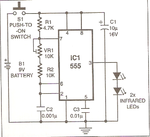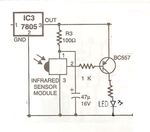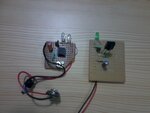psurya1994
Member level 5
I want to a receiver similar to that of the TSOP receiver which detects infrared waves at the frequency of 50KHz. This receiver should output a voltage of 0V when the wave is not received and output 5V when the wave is received.
I am planning to make the transmitter using a 555timer in astable mode, would it be fine?
I am planning to make the transmitter using a 555timer in astable mode, would it be fine?





